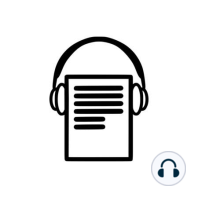20 min listen

A new microphysiological system shows hypoxia primes human ISCs for interleukin-dependent rescue of stem cell activity
A new microphysiological system shows hypoxia primes human ISCs for interleukin-dependent rescue of stem cell activity
ratings:
Length:
20 minutes
Released:
Feb 1, 2023
Format:
Podcast episode
Description
Link to bioRxiv paper:
http://biorxiv.org/cgi/content/short/2023.01.31.524747v1?rss=1
Authors: Rivera, K. R., Bliton, R. J., Burclaff, J., Czerwinski, M. J., Liu, J., Trueblood, J. M., Hinesley, C., Breau, K. A., Joshi, S., Pozdin, V. A., Yao, M., Ziegler, A. L., Blikslager, A. T., Daniele, M., Magness, S.
Abstract:
Background & Aims: Hypoxia in the intestinal epithelium can be caused by acute ischemic events or conditions like Inflammatory Bowel Disease (IBD) where immune cell infiltration produces "inflammatory hypoxia", a chronic condition that starves the mucosa of oxygen. Epithelial regeneration after ischemia and IBD suggests intestinal stem cells (ISCs) are highly tolerant to acute and chronic hypoxia; however, the impact of acute and chronic hypoxia on human ISC (hISC) properties have not been reported. Here we present a new microphysiological system (MPS) to investigate how hypoxia affects hISCs isolated from healthy human tissues. We then test the hypothesis that some inflammation-associated interleukins protect hISCs during prolonged hypoxia. Methods: hISCs were exposed to less than 1.0% oxygen in the MPS for 6-, 24-, 48- & 72hrs. Viability, HIF1a; response, transcriptomics, cell cycle dynamics, and hISC response to cytokines were evaluated. Results: The novel MPS enables precise, real-time control and monitoring of oxygen levels at the cell surface. Under hypoxia, hISCs remain viable until 72hrs and exhibit peak HIF1a; at 24hrs. hISCs lose stem cell activity at 24hrs that recovers at 48hrs of hypoxia. Hypoxia increases the proportion of hISCs in G1 and regulates hISC capacity to respond to multiple inflammatory signals. Hypoxia induces hISCs to upregulate many interleukin receptors and hISCs demonstrate hypoxia-dependent cell cycle regulation and increased organoid forming efficiency when treated with specific interleukins Conclusions: Hypoxia primes hISCs to respond differently to interleukins than hISCs in normoxia through a transcriptional response. hISCs slow cell cycle progression and increase hISC activity when treated with hypoxia and specific interleukins. These findings have important implications for epithelial regeneration in the gut during inflammatory events.
Copy rights belong to original authors. Visit the link for more info
Podcast created by Paper Player, LLC
http://biorxiv.org/cgi/content/short/2023.01.31.524747v1?rss=1
Authors: Rivera, K. R., Bliton, R. J., Burclaff, J., Czerwinski, M. J., Liu, J., Trueblood, J. M., Hinesley, C., Breau, K. A., Joshi, S., Pozdin, V. A., Yao, M., Ziegler, A. L., Blikslager, A. T., Daniele, M., Magness, S.
Abstract:
Background & Aims: Hypoxia in the intestinal epithelium can be caused by acute ischemic events or conditions like Inflammatory Bowel Disease (IBD) where immune cell infiltration produces "inflammatory hypoxia", a chronic condition that starves the mucosa of oxygen. Epithelial regeneration after ischemia and IBD suggests intestinal stem cells (ISCs) are highly tolerant to acute and chronic hypoxia; however, the impact of acute and chronic hypoxia on human ISC (hISC) properties have not been reported. Here we present a new microphysiological system (MPS) to investigate how hypoxia affects hISCs isolated from healthy human tissues. We then test the hypothesis that some inflammation-associated interleukins protect hISCs during prolonged hypoxia. Methods: hISCs were exposed to less than 1.0% oxygen in the MPS for 6-, 24-, 48- & 72hrs. Viability, HIF1a; response, transcriptomics, cell cycle dynamics, and hISC response to cytokines were evaluated. Results: The novel MPS enables precise, real-time control and monitoring of oxygen levels at the cell surface. Under hypoxia, hISCs remain viable until 72hrs and exhibit peak HIF1a; at 24hrs. hISCs lose stem cell activity at 24hrs that recovers at 48hrs of hypoxia. Hypoxia increases the proportion of hISCs in G1 and regulates hISC capacity to respond to multiple inflammatory signals. Hypoxia induces hISCs to upregulate many interleukin receptors and hISCs demonstrate hypoxia-dependent cell cycle regulation and increased organoid forming efficiency when treated with specific interleukins Conclusions: Hypoxia primes hISCs to respond differently to interleukins than hISCs in normoxia through a transcriptional response. hISCs slow cell cycle progression and increase hISC activity when treated with hypoxia and specific interleukins. These findings have important implications for epithelial regeneration in the gut during inflammatory events.
Copy rights belong to original authors. Visit the link for more info
Podcast created by Paper Player, LLC
Released:
Feb 1, 2023
Format:
Podcast episode
Titles in the series (100)
Endosomal removal and disposal of dysfunctional, immunostimulatory mitochondrial DNA by PaperPlayer biorxiv cell biology